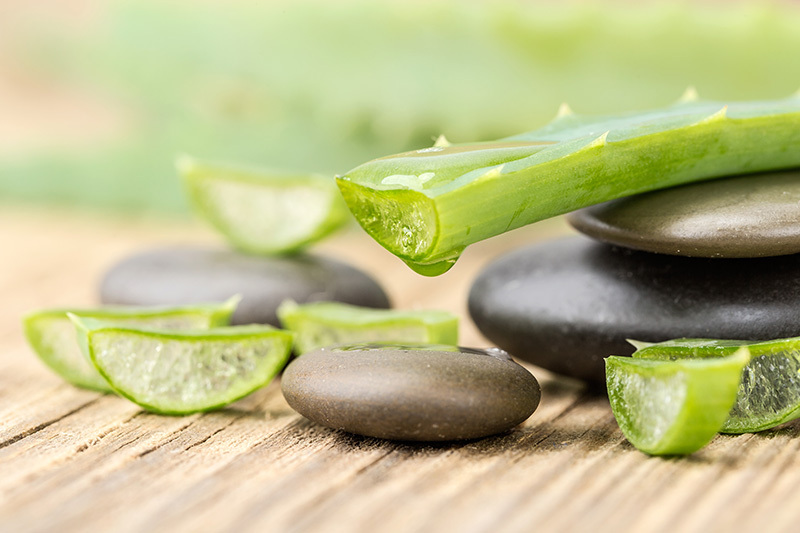Secrets to Prolonging the Bloom of Your Holiday Poinsettias
Poinsettias are synonymous with the festive season, filling homes with their vibrant hues and spreading holiday cheer. Known for their brilliant red, pink, cream, and white "flowers" (which are actually colored bracts), these plants are a beloved staple in winter decor. However, once the holidays pass, many people find that their poinsettias begin to fade quickly. How can you keep the color and vibrancy of your holiday poinsettias longer? This comprehensive guide reveals the secrets to prolonging poinsettia blooms, ensuring your festive centerpieces delight you well beyond the New Year.

Understanding the Poinsettia: More Than Just a Holiday Flower
Before diving into prolonging the bloom of holiday poinsettias, it's helpful to understand the plant's unique features. Poinsettias (Euphorbia pulcherrima) are native to Mexico, where they thrive as perennials in warm climates. The brightly colored "petals" are actually bracts--modified leaves that surround the plant's tiny, true flowers found at the center. To maximize your plant's beauty and longevity, it's crucial to meet its specific care requirements.
Why Do Poinsettias Lose Their Color?
Poinsettias' stunning bracts often begin to fade or drop soon after the holidays. Several factors contribute to this, including:
- Incorrect watering
- Poor lighting
- Temperature fluctuations
- Exposure to drafts
- Lack of humidity
Luckily, by understanding and catering to their needs, you can keep your poinsettia blooming longer and healthier.
The Ultimate Guide to Prolonging Poinsettia Blooms
1. Choose Healthy Poinsettias to Start
The secrets to prolonging the bloom of your holiday poinsettias start at the store. When shopping for a poinsettia, keep these tips in mind:
- Choose a plant with lush, vibrant bracts. Avoid those with drooping or yellowing leaves.
- Check the base for strong green foliage and no signs of pests or mold.
- Look for plants with unopened central buds. This indicates fresh poinsettias that will bloom longer.
2. Protect on the Journey Home
Poinsettias are sensitive to cold. When taking your plant home, especially in winter, make sure it's wrapped well. Even brief exposure to chilly temperatures can cause irreversible leaf drop and bract fading. Ask the retailer for protective sleeves or layers of paper, and avoid leaving it in a cold car.
3. The Right Spot: Light and Placement
Lighting is one of the most crucial factors in extending the bloom of poinsettias. Here's what your plant needs:
- Bright, indirect sunlight: Place near a sunny window, but avoid direct sun rays that may scorch the leaves.
- Avoid cold drafts and heat sources: Keep your poinsettia away from radiator vents, fireplaces, and exterior doors that cause temperature swings.
- Consistent temperatures: Ideally, maintain daytime temperatures between 65-70?F (18-21?C), and night temperatures no lower than 60?F (15?C).
Stable warmth and soft, filtered light are key to maximizing your poinsettia's blossom period.
4. Master Proper Watering Techniques
Improper watering is the top reason why poinsettia blooms fade prematurely. Here's how to get it right:
- Water when soil feels dry to the touch about an inch down. Don't let the plant sit in soggy soil, as this causes root rot.
- Use room temperature water: Cold or hot water is a shock to the roots.
- Drain excess water: Remove any decorative foil or punch holes in it to let water escape. Sitting water drowns the roots.
- Avoid misting the leaves: This can cause fungal problems.
Setting a consistent watering schedule helps the poinsettia keep its vivid colors and healthy appearance.
5. Boost Humidity for Lasting Color
Indoor air is often dry during winter, which can cause poinsettia bracts and leaves to crisp and drop. To maintain the best poinsettia blooms:
- Group plants together to naturally raise humidity.
- Place a tray of water and pebbles under your poinsettia (make sure the pot sits above the water, not in it).
- Consider using a humidifier in the room.
Proper humidity keeps poinsettias looking lush and full.
6. Fertilize with Care After Bloom
During the blooming period, poinsettias generally don't require extra fertilizer. However, if you want to keep your holiday poinsettia blooming for an extended period, feed it once blooming slows using a balanced, water-soluble fertilizer at half strength. This encourages new growth and maintains vibrant color as the plant transitions after the main flower display.
7. Guard Against Pests and Disease
Common pests such as whiteflies and aphids can sap the plant's energy and shorten the life of the blooms. To prevent problems:
- Inspect the plant regularly for signs of pests under leaves and near bracts.
- Quarantine new plants before placing them with others.
- Wipe leaves gently with a soft, damp cloth if needed.
Healthy, pest-free plants retain their bracts and color longer.
8. Minimize Plant Stress
Poinsettias are quick to show distress when their environment changes. Avoid moving your plant frequently or subjecting it to environmental shocks. Stable conditions mean long-lasting blooms on your poinsettia.
Advanced Care for Repeat Blooming: Make Your Poinsettia Rebloom Next Holiday
Want to keep your poinsettia not only thriving, but also re-blooming for next year's festive season? With a little strategy, you can encourage your favorite plant to display its vivid colors again:
- After-Bloom Rest: Once the bracts start to fade in late winter/early spring, reduce watering, allowing the plant to rest. The leaves may yellow and fall, but don't worry--it's a normal cycle.
- Spring Pruning: In early April, cut stems back to about 6 inches. This encourages bushier growth and future blooming.
- Resume Watering and Fertilizing: As new growth appears, increase watering and feed with a balanced fertilizer every 3-4 weeks.
- Move Outdoors in Summer: If you live in a mild climate, place the plant outside in partial shade once night temperatures stay above 50?F (10?C). Water and fertilize regularly.
- Repot in Early Summer: Use fresh, lightweight potting soil to give roots plenty of room to grow.
- Pinch to Promote Fullness: Pinch back new stems in late June and again in mid-August to encourage a bushy, compact shape.
The Crucial Step: Light Control for Reblooming
For poinsettias to produce their famous bracts, they need extended darkness each day for about 8-10 weeks before the holidays. Here's how to do it:
- Starting in late September or early October, give your plant 14-16 hours of total darkness per night (such as in a dark closet or under a box).
- During the day, return it to bright, indirect sunlight for 8-10 hours.
- Repeat daily for roughly 8 weeks, then stop once bracts have colored.
*Missing even a small amount of artificial light during "night" hours can prevent rebloom, so be diligent!* This method ensures your holiday poinsettia's bright display for another season.
Common Mistakes to Avoid When Caring for Holiday Poinsettias
Even the most attentive plant lovers can make missteps. Avoid these common pitfalls to help keep your poinsettia blooms fresh longer:
- Overwatering: Leads to root rot, leaf drop, and faded bracts.
- Underwatering: Causes wilting and early leaf loss.
- Direct exposure to heat or cold: Results in rapid decline of colored bracts.
- Poor light placement: Too dim or too harsh disrupts blooming.
- Neglecting humidity: Accelerates leaf and bract browning.
- Forgetting darkness period for rebloom: Prevents the plant from producing new colorful bracts.
Eco-Friendly Tips: Composting and Repurposing Spent Poinsettias
If your poinsettia's holidays are over and you're ready to part with it, there are sustainable alternatives to tossing it away:
- Compost the plant: Toss stems and leaves into your compost pile to enrich future garden soil.
- Repurpose the container: Use for other houseplants or craft projects.
- Donate healthy plants to local organizations or nursing homes to spread cheer.

Frequently Asked Questions About Poinsettia Blooms
How long do poinsettias typically bloom?
With proper care, the colored bracts of poinsettias can last anywhere between 4 to 8 weeks, sometimes even longer if you follow best practices.
Can poinsettias survive outdoors in winter?
Poinsettias are tropical plants and cannot tolerate frost or freezing temperatures. Only in USDA zones 9-11 can they be planted outside year-round. Otherwise, keep them indoors during winter.
Are poinsettias poisonous for pets?
Poinsettias are only mildly toxic. Ingestion may cause mild stomach upset in cats or dogs, but they're not considered deadly. Still, keep out of reach of curious pets to avoid chewing.
Conclusion: Enjoy Your Vibrant Holiday Poinsettias for Longer
Poinsettias bring unforgettable color and warmth to any holiday celebration. With the right care and attention, you can prolong the vibrancy of your poinsettia blooms well into the new year--or even prepare it for a dazzling display next season. Remember:
- Select a healthy plant and protect it from cold shock.
- Keep it in bright, indirect light with stable temperatures.
- Water only when needed and let excess water drain away.
- Maintain humidity, keep away from draughts and heaters, and inspect regularly for pests.
Follow these time-tested secrets to prolonging the bloom of your holiday poinsettias, and you'll enjoy this iconic plant's cheerful beauty for many weeks--or years--to come!
